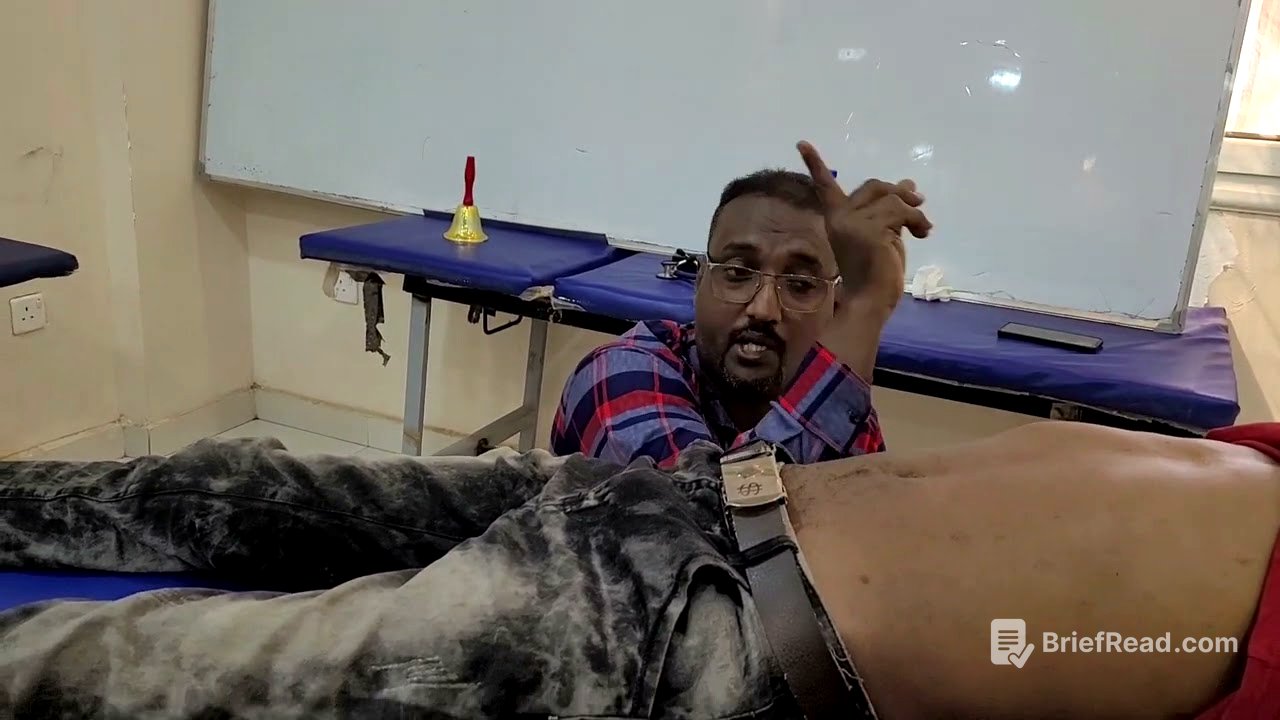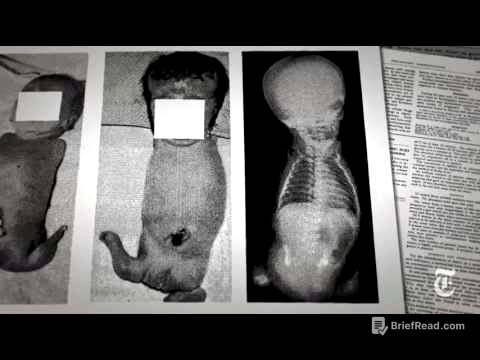TLDR;
This video provides a comprehensive guide to performing an abdominal examination, covering essential steps from initial observation to specific palpation techniques for organs like the liver, spleen, and kidneys. It emphasises patient comfort, proper hand techniques, and key observations to identify potential abnormalities such as tenderness, masses, and ascites.
- Initial steps involve hand washing and patient introduction.
- Examination proceeds from general inspection to palpation and percussion.
- Specific techniques are detailed for assessing the liver, spleen, kidneys, and for detecting ascites.
Initial Steps and General Inspection [0:09]
The examination begins with hand washing and entering the room. The examiner introduces themselves, explains the procedure to the patient, and asks for consent, ensuring the patient is aware they can stop the examination if they experience discomfort. The examiner then takes two steps back to begin a general inspection.
Hand Examination [1:07]
The hand examination involves checking for signs like clubbing, leukonychia, palmar erythema, and Dupuytren's contracture. For patients with a history of fistula, inspect for needle marks, palpate for a thrill, and auscultate for a bruit.
Face, Neck and Chest Examination [2:42]
The examination proceeds from above, starting with the face, looking for jaundice and temporal wasting. The mouth is inspected for ulcers, and the lower lip is pulled down to check for anaemia. The neck is examined for raised JVP. The chest is inspected for spider naevi and loss of axillary hair.
Chest Expansion and Vocal Fremitus [3:50]
The examiner assesses chest expansion and listens for vocal fremitus. The patient is asked to take deep breaths and cough to assess the lungs.
Abdominal Examination: Initial Observation and Superficial Palpation [5:27]
The abdominal examination begins with the patient lying flat. The examiner sits at the same level as the abdomen for observation, asking if there's any pain or discomfort. Superficial palpation is performed while observing the patient's face for signs of tenderness or masses.
Deep Palpation of the Liver [7:08]
Deep palpation of the liver starts from the side, using an oblique hand position. The patient is asked to take deep breaths to help bring the liver into contact with the hand. The examiner notes the liver's size, surface, and tenderness. Percussion is used to define the upper and lower borders of the liver. The normal liver span is between 8-12cm.
Palpation of the Left Lobe of the Liver and Spleen [10:50]
If a mass is felt during superficial palpation, the examiner proceeds to palpate the left lobe of the liver. For spleen palpation, the examiner uses an oblique hand position and asks the patient to take deep breaths. If the spleen isn't palpable, the patient is turned to the right side to aid palpation.
Palpation of Polycystic Kidneys [14:14]
For polycystic kidney palpation, the examiner uses an oblique hand position and asks the patient to take deep breaths. The examiner's eyes should be on the patient's face to observe any signs of discomfort.
Assessment for Ascites [15:53]
The abdomen is percussed to identify areas of dullness and resonance. Shifting dullness is assessed by percussing from above downwards and then shifting the patient to the side and repeating the percussion.
Auscultation and Lymph Node Examination [17:21]
Auscultation is performed in fixed areas to listen for bruits or abnormal noises. The patient is then asked to sit forward to check for lymph nodes, including anterior, posterior, supraclavicular and axillary nodes.
Liver Span Measurement [18:38]
The normal liver span is measured by percussion and should be between 8 to 12 centimetres. A liver span less than 8 centimetres or more than 12 centimetres may indicate abnormality.









